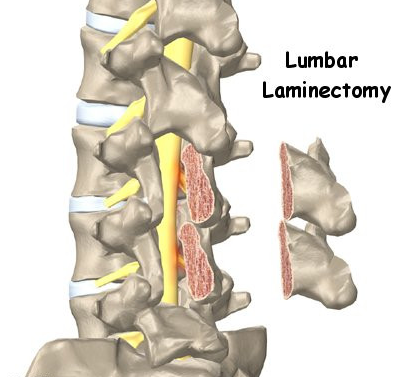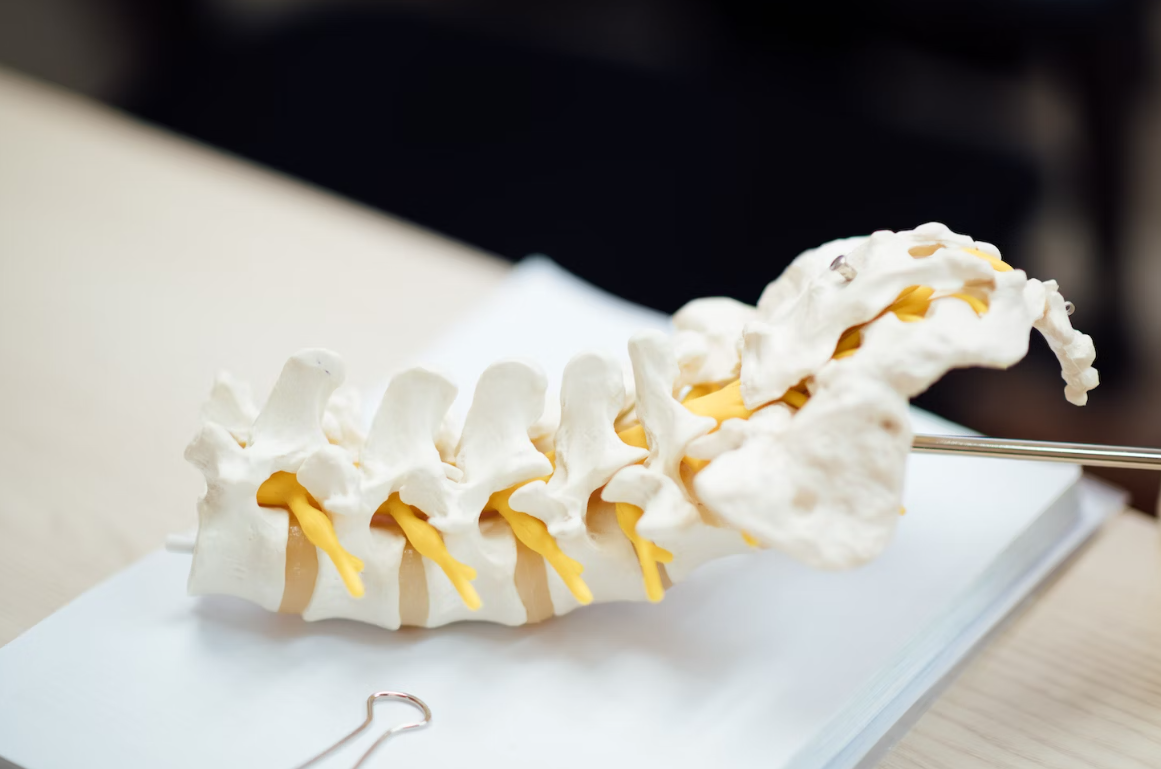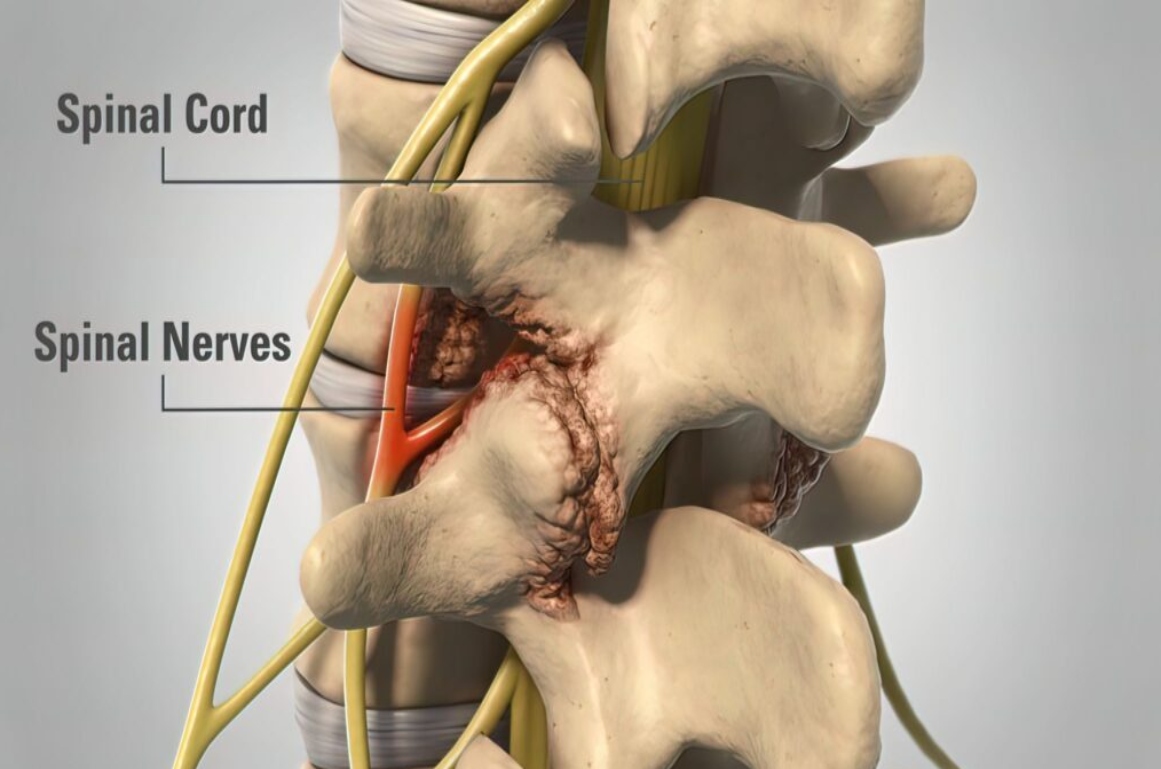Lumbar Laminectomy
with Nerve Root Compression
The prospect of facing back surgery can be unsettling. While it is true that there are a number of treatments for back pain that are good first steps towards relief, in some cases the pain persists. For severe lower back pain, a lumbar laminectomy with nerve root decompression may help you ease pain and restore mobility when other treatments have been unsuccessful.
Keep reading to learn more about this potential treatment. If you have additional questions, get in touch with the team at North Texas Neurosurgical Consultants for more information.


What is a lumbar laminectomy with nerve root decompression?
Lumbar laminectomy with nerve root decompression goes by a few different names, including decompressive lumbar laminectomy and spinal stenosis surgery. No matter what you call it, the surgery remains the same. The back of each vertebra has lamina, a connective tissue that covers and protects your spinal canal. A lumbar laminectomy removes the lamina to relieve pressure on the nerves and the spinal cord.This decompression can ease chronic, excruciating back pain when other more conservative treatments have been unsuccessful.
Decompressive lumbar laminectomy is used for a variety of conditions, including bulging or herniated disc, spinal injuries, and metastatic spinal cord compression, but one of the primary conditions it treats is spinal stenosis.
Spinal stenosis is a narrowing of the spinal column, often in the lumbar spine but sometimes in the cervical spine. This narrowed spinal column can occur due to age. It can lead to some very painful symptoms, including:
-
Sciatic pain (sciatica) radiating across the hip and down the leg
-
Numbness or weakness in the legs and arms
-
Pins and needles sensations in the extremities
-
Less sensory sensitivity
-
Difficulty walking
All of these symptoms indicate compression or involvement of the nerves, a hallmark symptom of spinal stenosis.
In extreme cases that require immediate medical attention, spinal stenosis can lead to a loss of bowel or bladder control, a symptom that can signal serious complications.
If you undergo this procedure, here’s some of what you can expect. Always talk to your surgeon for more information. A decompressive lumbar laminectomy is performed under general anesthesia. Each patient is different, but in general lumbar laminectomy surgery follows these four steps.
Step 1: Administer general anesthesia and position patient
A general anesthetic is administered through a mask and a breathing tube is placed to assist with breathing.
The patient is then positioned face down on the table and the area for surgery is thoroughly prepped by the healthcare team.
Step 2: Laminectomy procedure
Your doctor makes an incision in the surgical area, pulling muscle and soft tissue away to expose the vertebra.
They remove the lamina and any visible bone spurs or ligaments that are applying pressure to nerves (this is the decompression portion of the surgery).
Step 3: Other procedures
This is where surgery becomes more specialized, as it depends on the patient’s other conditions.
For example, some patients may have damage to their vertebral discs and will also have spinal fusion surgery as well. Others may have healthy discs that do not need to be removed.
Step 4: Closure
After the lumbar laminectomy with nerve root decompression is performed, the wound is closed and the anesthesia is stopped. You will be moved to recovery and closely monitored as you wake up from anesthesia.
Throughout this procedure, your comfort is of primary importance. It is important to discuss your concerns and get all of your questions answered to ease your mind in preparation for this procedure.
For many patients, lumbar laminectomy significantly reduced pain where other treatments had failed. Most patients experienced greater success with a combination of lumbar laminectomy with nerve decompression and spinal fusion.
It is important to note again that success rates increase for patients who are in overall good health and have tried other treatment options first.
Lumbar laminectomy recovery time differs from patient to patient, and we want you to have minimal downtime (and maximum pain relief). If you have had spinal fusion surgery along with lumbar laminectomy, expect complete healing to occur anywhere from three to six months.
As with any surgery, lumbar laminectomy surgery has risks (although rare). Potential complications include:
-
Bleeding
-
Infection
-
Blood clots
-
Nerve injury
-
Spinal fluid leak
If you have any signs of infection such as fever, pain, swelling, redness, or drainage at the incision site, call your surgeon as these can be a sign of infection.
North Texas Neurosurgical Consultants are here for you before, during, and after surgery to increase your chances of a successful procedure. If you have any questions or concerns, we’re always available. We want you to have the best experience possible.
Due to the extensive nature of the surgery, this is an in-patient procedure that requires a hospital stay of one to four days (again, this depends on the patient, their overall health, and their previous level of mobility). Within days, most patients are able to walk without assistance, but that should be the extent of activity. Avoid strenuous activity for at least six weeks, and possibly more depending on your doctor’s instructions.
Strenuous activity includes:
-
Moderate to intense exercise
-
Long periods of driving
-
Heavy lifting
-
Repetitive motions that involve the area of surgery
When you leave the hospital, you will have a brace for support and a short-term prescription for pain medication. Using both according to your doctor’s directions can help minimize pain and promote healing and recovery. Additionally, you may receive a recommendation for physical therapy, and a strong admonishment not to smoke, vape, dip, or otherwise use nicotine products. Nicotine prevents new bone growth and can extend healing times.




